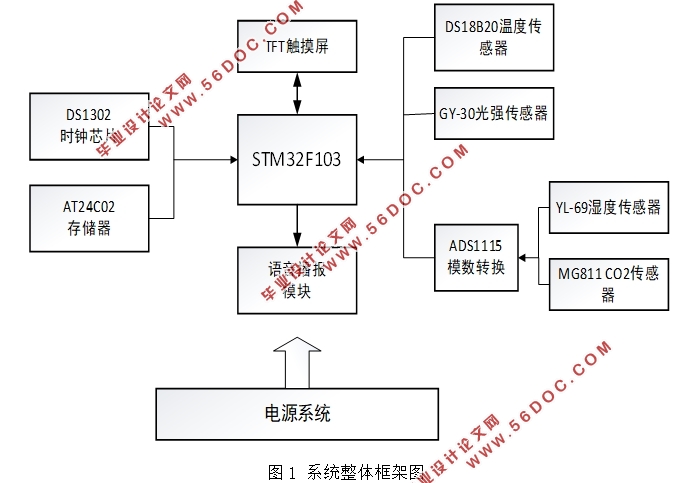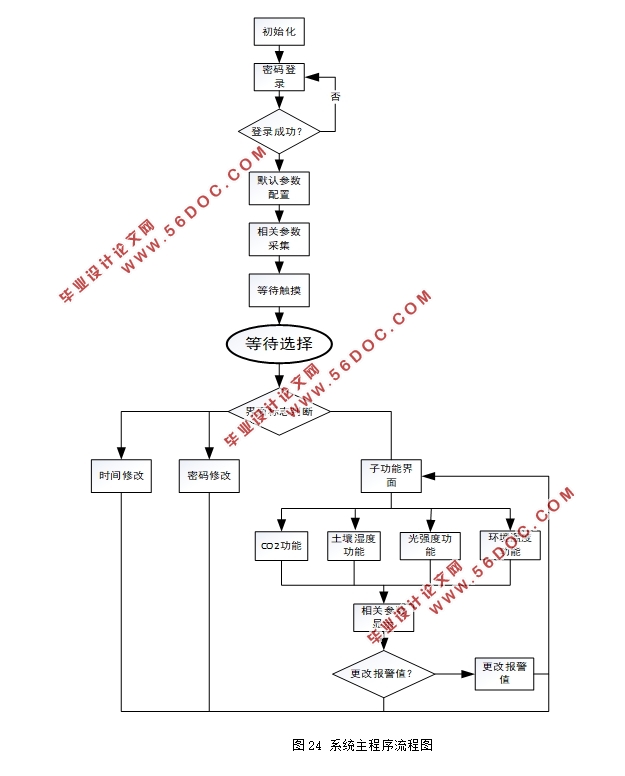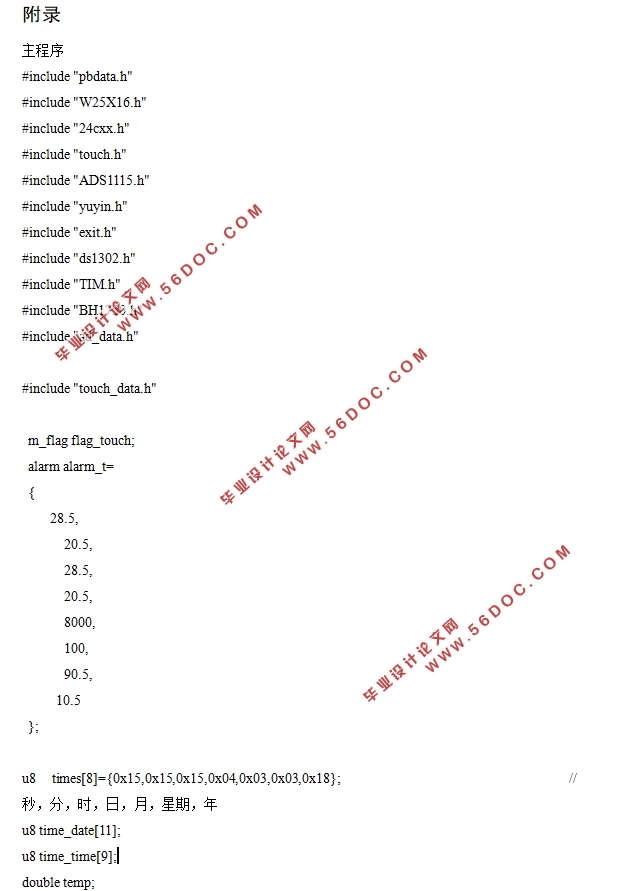基于STM32单片机的大棚监测系统的设计(附主程序清单)
来源:wenku7.com 资料编号:WK717161 资料等级:★★★★★ %E8%B5%84%E6%96%99%E7%BC%96%E5%8F%B7%EF%BC%9AWK717161
以下是资料介绍,如需要完整的请充值下载。
1.无需注册登录,支付后按照提示操作即可获取该资料.
2.资料以网页介绍的为准,下载后不会有水印.资料仅供学习参考之用. 密 保 惠 帮助
资料介绍
基于STM32单片机的大棚监测系统的设计(附主程序清单)(12000字)
摘要:当代农业发展过程越来越注重机械化与智能化,机械智能化是未来农业发展的归宿,尤其是蔬菜的种植越来越依赖大棚温度湿度以及二氧化碳浓度的影响,因此设计一种大棚监测系统可以大幅度提高农业产量。本文主要讨论了一种基于STM32F103单片机的大棚监测系统,系统具备实时时间显示、大棚温度测量、光强度监测、土壤湿度监测及二氧化碳浓度检测功能,并可以通过3.2寸TFT液晶屏对检测数据进行实时显示,当监测到环境数据超出用户设定的参考范围时系统还能够发出报警,达到提醒用户注意的功能。该系统具有成本低,精确度高,结构简单,稳定性强等特点。
关键词: 大棚监测系统; STM32F103; TFT触摸屏; 报警功能
Greenhouse Monitoring System Based on STM32 Microcontroller
Abstract:The development of modern agriculture is increasingly focusing on mechanization and intelligence. Mechanical intelligence is the destination of future agricultural development. In particular, the cultivation of vegetables is increasingly dependent on the temperature and humidity of greenhouses and the influence of carbon dioxide concentration. Therefore, designing a greenhouse monitoring system can greatly increase agricultural output. This article mainly discusses a greenhouse monitoring system based on STM32F103 MCU. The system has the functions of real-time display, greenhouse temperature measurement, light intensity monitoring, soil moisture monitoring and carbon dioxide concentration detection. It can perform real-time data detection through a 3.2-inch TFT LCD screen. When the monitored environment data exceeds the reference range set by the user, the system can also send an alarm to the function of reminding the user of the attention. The system has the characteristics of low cost, high accuracy, simple structure and strong stability.
Key words:Greenhouse monitoring system; STM32F103; TFT touch screen; Alarm function



目 录
1 绪论 1
1.1研究目的与意义 1
1.2 国内外研究现状 1
1.3论文安排 2
2系统设计方案与方案选择 2
2.1 总体设计方案 2
2.2系统各模块设计方案 3
2.2.1 主控单片机的选择 3
2.2.2 显示模块的选择 4
2.2.3 温度传感器的选择 5
2.2.4 光强传感器的选择 6
2.2.5 二氧化碳传感器的选择 7
2.2.6 湿度传感器的选择 7
2.2.7 语音播报模块 8
2.2.8 实时时钟模块 8
3 硬件设计 9
3.1电源电路设计 9
3.2 主控单片机电路设计 10
3.3 TFT触摸屏电路设计 10
3.4 DS18B20温度传感器电路设计 14
3.5 GY-30光强传感器电路设计 14
3.6 YL-69湿度传感器电路设计 15
3.7 MG811二氧化碳气体传感器电路设计 16
3.8 AD转换电路 16
3.9 SYN6288语音合成电路 17
3.10 DS1302时钟模块电路 17
4 软件设计 18
4.1 开发环境 18
4.2 主程序设计 19
4.3 显示与输入程序的设计 20
4.4 温度测量程序 21
4.5 光强检测程序 21
4.6 模数转换程序 22
4.7 DS1302时钟程序 22
4.8 语音播报程序 23
5系统调试 23
5.1系统实物图 24
5.2 操作流程 24
6总结 26
参考文献: 27
致谢 28
附录 29
|







